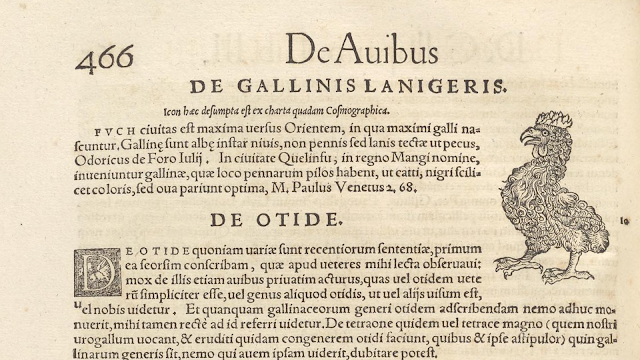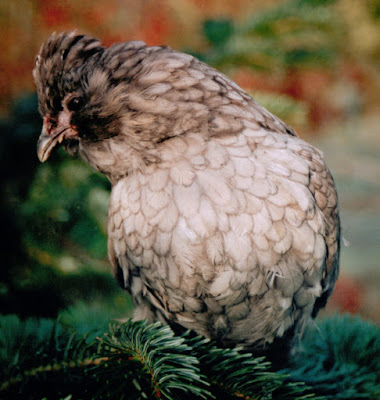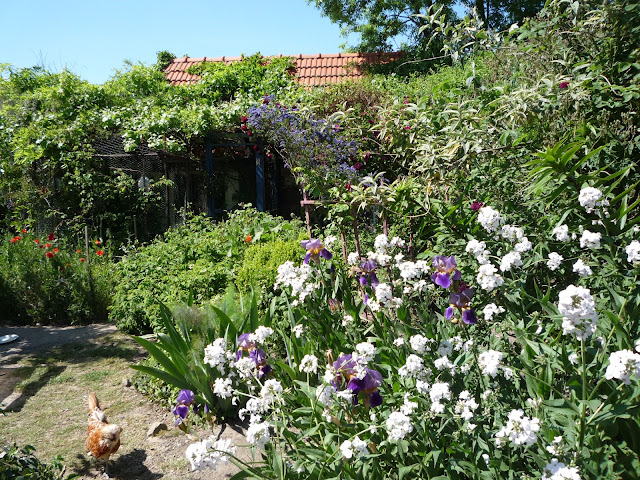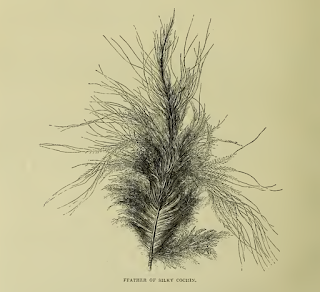It is a very different experience purchasing a new bird to having one suddenly appear and for you to rehome it, in particular when this is a cockerel or young rooster. That said, just adding a new bird of any description or provenance can cause problems within the dynamics of an established flock, so what is relayed here can be just as relevant to a planned or unplanned purchase.
"Some are born Silkies, some achieve Silkies, and some have Silkies thrust upon them."Twelfth Night Act II, scene v
A few weeks ago my neighbour presented me with a Silkie, a Birthday gift that hadn't worked out as well as expected! In the following article I'll lay out the case study for what we've just attempted:- to make the transition from noisy, scared and belligerent cockerel into an accepted, calm and still uniquely individual member of a flock.
Research - Provenance is Key
In rehoming or purchasing an adult bird, try to establish how it has been
kept previously and what, in the former, have been the problems because
this can impact upon the harmony of your whole garden. Having been introduced to my neighbour's new poultry some months back, I had a good knowledge of what to expect from the set up. My neighbour has a small five hen flock of large/standard hens in a good-sized but enclosed run and to which this young Silkie bantam cockerel was later introduced. To this end I can deduce that the cockerel has not only radically changed the dynamics of a single sex flock but being young and purchased from a pet shop, found that his new freedom gave him free-rein. He had easily become dominant over a power-shared flock with a super-dominant (see article below) hen, who since his removal has again become overtly aggressive.
 |
| Our first flock in a rare moment of harmony with Ardenner sisters as super-dominant over Dorothée |
Heritage breed poultry from pet stores, particularly bantams, are usually sold as exhibition stock and have prices and often personalities to match. It is unlikely, being sourced from dedicated breeders, that they will have experienced the dynamics of a mixed flock. Thus unlike their wild cousins, or birds in a 'Jungle-style' forest, the males do not have the control upon their more exuberant instinctively youthful behaviours around hens. In my flock maturing cockerels, hatched here or even introduced are subjected to the rules created for them by the older males and dominant females and which have maintained harmony throughout our forest garden. Our input was in the positioning of certain key features, such as coops and food troughs. In the main however, my birds worked out their flock dynamics for themselves.
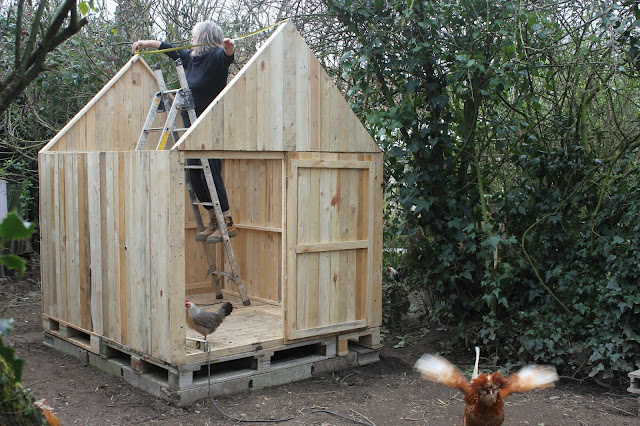 |
| Stanislas: "..it's quite roomy and the roof is going to be this wide!" |
Even where for example, you are being asked to take on birds whose owner has died or moved, you can still glean necessary information from those involved about a bird that can help in the re-homing process. As an example I rehomed a Frizzle, whose keeper had died. From the neighbour in charge of rehoming, I learned that the Frizzle, a hen, living in a wild garden in monogamy with a Frizzled cockerel, who had also died, had seemed to him to be 'a very lonely bird'. The wild garden contained other poultry, mainly ducks, geese and peacocks but no other chickens. This hen in coming into my then very small flock, tried desperately to attach herself to both my Ardenner cockerel and a large and relatively new-to-the-flock Wyandotte cross hen who was being picked on by my two Ardenner hens. Bringing in the Frizzle helped 'Dorothée' a great deal because it gave her someone to dominate but that didn't help my new Frizzle!
With heritage breeds and crosses thereof, you actually have an advantage in understanding how harmony may be achieved because having been around for a very long time there has been a great deal written about them. It is also true, in my experience that the older breeds find it easier to adapt to natural flock behaviours, it is as if they have these within themselves and thus they just need 'bringing out'.
Silkies?
My first instinct after being asked to rehome the Silkie was to find out as much as I could about them, which involved dipping into some amazing texts. The following from Conrad Gessner's Historiæ animalivm published in 1551:'Concerning Wool-bearing Poultry
In the East, fowls are bred as white as snow, covered, not with feathers, but with wool, like sheep and that in the city of Quelinfu, in regno Mangi, M. Paulus Venetus says that hens are to be found which have, instead of feathers, hairs like those of a cat and that in colour they are black, and lay good eggs.'
Certainly as far as the Silkie is concerned his unusual features: purple skin, fluffy feathers and peculiar crow have made all my birds aware that something new had been added!
Learned Helplessness
 |
| Frizzante the apricot Frizzle |
In the exercise of rehoming or adding a new bird of any sort you should consider the well-being of all concerned, the bird added as well as those added to. Regardless of your stance on Germ Theory, you should consider the mental state of all considered as being of tantamount importance. This in particular with regard to how poultry view each others' status because that will impact on how they are treated. Putting a bird on view 'in quarantine' in a small cage, signals its inferiority in the pecking order and it will be treated accordingly when it is finally released. This in turn can create within the former captive a nervous state:
'Learned helplessness is judged to be a state in which animals eventually become passive in reaction to suffering they cannot avoid.' (Appleby, Hughes and Elson, 1992).
With reference to the problems I had with my rehomed Frizzle being rejected by even my lowly pecking order hen Dorothée, I believe this was directly due to my having put her in a smallish wired run at the outset. This both established to my other poultry and sadly to herself her inferior ranking. The story however has a strange twist because once the two Ardenners went broody my Ardenner cockerel paired off with Frizzante and she gained her confidence and grew a whole set of new feathers! She lived to a ripe old age and as a formidable old lady died in her sleep after a good meal and three skirmishes with juvenile Polish hens, all of which she won!
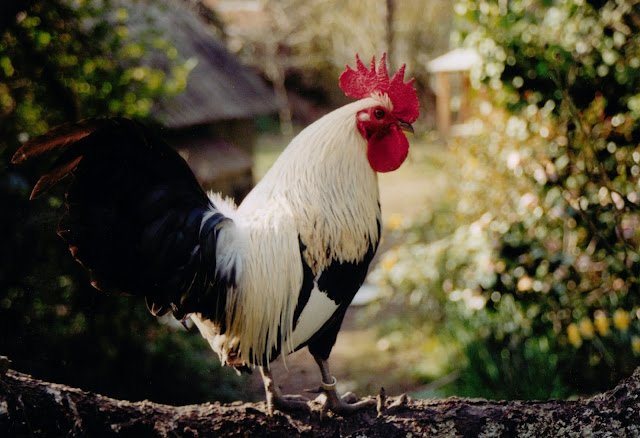 |
| Raffles |
Recognition
 |
| 'Identifying a Scott' from PistonHeads Pinterest |
There are various studies on facial recognition abilities in birds. One of the most recent ones from The University of Lincoln has looked at how birds recognise human faces and voice patterns to identify if someone is a friend or stranger and thus potential foe. If you've had visitors to your garden with your birds free-ranging then you are probably aware of this already! It has been postulated that poultry can recognise at least eighty individual bird faces, so when adding to your flock this is an important consideration. Certainly birds identify voices too and this was something I believed would help me with Scott, as we named him, or rather Andy did after the Silk Scott motorbike. As my birds had heard the Silkie crowing over the hedge everyday, I reasoned that if I had him in the arbour in the middle of the garden, those birds might not realise that he was a new member of the garden.
Food is always a great way to get birds together, it can also be the cause of conflict but with hens and young (and old|) cockerels it is also a form of courtship, so I knew Scott would be keen on this ploy. How did I know when he was ready? Well because once I had established he felt good within his new domain, I provided him with his own food trough. Prior to this point he hadn't wanted to eat unless I was with him. He pecked a little at food I presented during the day but if I left him food, he just left it for the wild birds. After around the fifth day, I noticed him removing individual pieces of fruit and grain from his bowl and placing it on the ground with accompanying friendly noises, similar to those a mother hen uses to encourage chicks to eat. This is a ritual courtship behaviour known as 'tidbitting'. Unscrupulous males will pick up bits of stick or any old rubbish just to attract foolish females but Scott was luckily the roses and bracelet kind, happily, because my hens are wise to all those tricks!
Thus I opened the door and one of the several of the hens, who had been hanging around for days hoping to get some of Scott's uneaten food, was lured within his domain. Scott's first potential girl friend was unhappily a bad choice, a very broody Chickles (half-Sebright) and she told him in no uncertain terms that his intentions were not welcomed. However as the day went on Scott had greater luck in his choice.
Knowing When to Say No
When Scott was presented to me I was told that he had clawed one of the hens and that he was very dominant. You might think that at the time I should have thought seriously about rehoming him. Well I did and I also did give my neighbour the answer that this was a trial to see how it would work out. The very last thing I want to do to my birds is to upset the balance of a system that they created and has worked so well for them over the years. However, I was fortified with the knowledge of Junglefowl flock behaviours and how similar our flock dynamics were in relation to their wild cousins policing their own problems, in particular that of 'cocky' juveniles! However, I would advise that you should always qualify your offer to rehome with the proviso of a period of grace or trial. This is something that can save problems later. In rehoming the Frizzle for example, the guy who was in charge of the process was so happy to get the bird off his hands. To that extent those involved in rehoming tend to ignore the fact that they can be giving you a poisoned chalice with potentially the same problems as have been experienced before. When I went to collect my rehoming Frizzle mentioned above, I came back with six fantails and three doves, I loved them dearly and they are a joy in the garden but you see what I mean.Bonding to You
Details of how I did this are best explained in the film below. One thing that was very important to remember in the case of this particular rehoming was that Scott had been used to French language and I speak English at home. However, it is the tone that counts! From all I have read about Silkies, they are quite easy to tame and they have a good rapport with humans. This is great for starting out with a rehoming exercise but it may also mean that this will preclude a further bond with the flock. My beautiful Barbu de Watermael, for example comes of a race that forms an incredibly strong bond with the 'keeper' but in my experience, completely shuns the company of other birds. I used to have Gabriella as almost a permanent fixture on my shoulder, so much so that one passerby once asked if she was some sort of parrot. However in the case of Scott I already knew he had a penchant for hens and that was to be my next but one step.Establishing Basecamp
This was to be the arbour in front of a studio we have within the garden. It is large enough not to be seen as a cage and it has plenty of everything, shade/sun, vegetation, scratching/dustbathing, somewhere higher up to crow from. It is an area that I use for hens, who may need a little extra breakfast, so it is a great place for them to be enticed into, which was my next idea. For Scott this became his domain, a place he could call his own and in fact even though at my time of writing Scott is out in the garden and mingling with the flock, he still often hangs around this arbour and is let in and spends some time there each day, often with one of the original hens to whom he was formally introduced!Bonding with Individual(s)
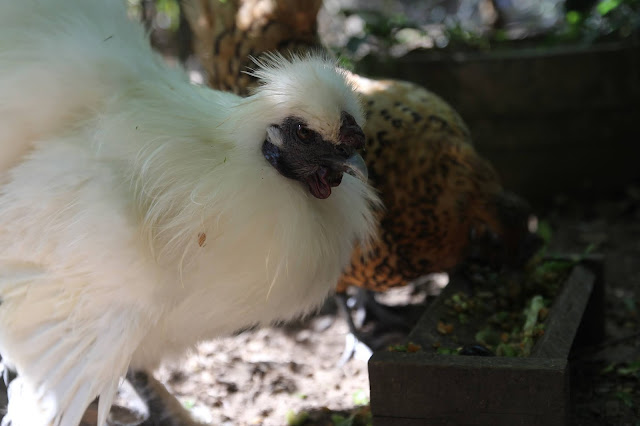 |
| Scott's first encounter with a broody! |
Food is always a great way to get birds together, it can also be the cause of conflict but with hens and young (and old|) cockerels it is also a form of courtship, so I knew Scott would be keen on this ploy. How did I know when he was ready? Well because once I had established he felt good within his new domain, I provided him with his own food trough. Prior to this point he hadn't wanted to eat unless I was with him. He pecked a little at food I presented during the day but if I left him food, he just left it for the wild birds. After around the fifth day, I noticed him removing individual pieces of fruit and grain from his bowl and placing it on the ground with accompanying friendly noises, similar to those a mother hen uses to encourage chicks to eat. This is a ritual courtship behaviour known as 'tidbitting'. Unscrupulous males will pick up bits of stick or any old rubbish just to attract foolish females but Scott was luckily the roses and bracelet kind, happily, because my hens are wise to all those tricks!
Thus I opened the door and one of the several of the hens, who had been hanging around for days hoping to get some of Scott's uneaten food, was lured within his domain. Scott's first potential girl friend was unhappily a bad choice, a very broody Chickles (half-Sebright) and she told him in no uncertain terms that his intentions were not welcomed. However as the day went on Scott had greater luck in his choice.
Bonding with the Flock
 |
| The obligatory ritualistic combat - Note the unimpressed hen |
On the first couple of nights Scott was with us, I put him to bed in his carrier box as I thought this would give him a sense of security. After a couple of nights though I put him onto the perch in one of the coops and removed him each morning to his arbour. Once I thought he had had enough contact with individuals and small groups of hens, my plan was to then introduce him to the flock attached to the coop wherein he slept. However...the first time Scott did this, it was unannounced, he basically evaded my grasp one morning. The result was very much as reflected in The Poultry Book - Comprising the Breeding and Management of Profitable and Ornamental Poultry, their Qualities and Characteristics by W. B. Tegetmeier pub. 1867
'This is the breed which gave rise in 1776 to the fable of the rabbit -fowl, shown at Brussels as the produce of a rabbit and a common hen.'This even though I have many Cochins in the garden many of who have similar 'silk' feathers but it is the general shape of Scott I believe as well as his bright blue ear lobes and pompom crest that make him look so otherworldly. As this half-rabbit, half -chicken ran around, every one in the garden went into Red Alert mode! Ironically this is one of the ploys I use if all else fails when introducing a new bird:- I create a false flag event so that every single bird can become worried and vocal, coming together as a common force irrespective of one of them being uncommon. Andy's Hawaiian shirt, with its colourful and obviously to poultry, deeply disturbing pattern that looks like a bird of prey (?), is one such item.
 |
| Odd-bike.com Pinterest |
Here is the accompanying film:
Thanks for dropping by and do feel free to share experiences or ask for further information in the comment section. If you have enjoyed this piece and found it useful think about sharing it with your family and friends, on social media and also maybe about joining this blog and/or subscribing to my Youtube channel or even supporting us on Patreon or
Until next time, all the very best from Normandie! Sue
RELATED ARTICLES
 Prevention & Cure - Power Games & Group Dynamics
Prevention & Cure - Power Games & Group Dynamics
Exploring the problem of stress triggers from dominant birds. This
includes general hen house arguments, from romance to food fights read more
 The Cochin Craze 1 - A Story of Addiction
The Cochin Craze 1 - A Story of Addiction
These fluffy bundles, which I have been raising
for ten years have a unique and fascinatingly terrible history,
involving bloody wars, tea, silver and above all opium. A four part
article on the chicken version of Tulip Mania and my own Cochin..read more
 Frizzles for a Forest Garden Part 1
Frizzles for a Forest Garden Part 1
In some countries, such as here in France, Frizzles are often viewed as
an individual breed rather than a form of feather mutation, which can
occur across several races...read more
RETURN TO CONTENTS PAGE
© 2020 Sue Cross
© 2020 Sue Cross



